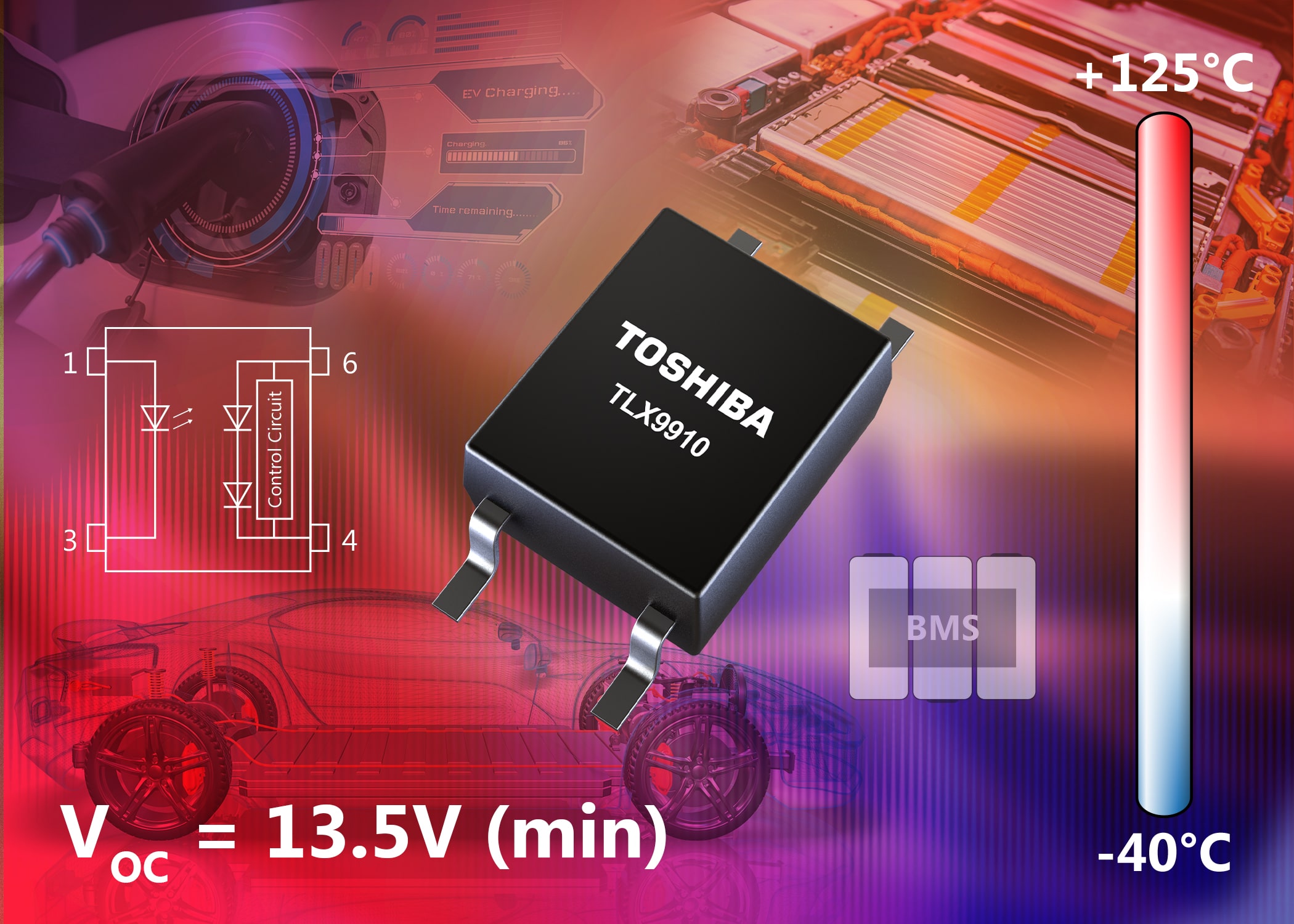Toshiba launches photovoltaic output photocoupler for automotive
4th December 2023

Toshiba Electronics Europe GmbH (“Toshiba”) has released a new photovoltaic output photocoupler with an enhanced open-circuit voltage. The new device is primarily intended for use within solid-state relay (SSR) applications in automotive. However, it can equally be used in industrial applications, such as renewable energy.
In recent years, automotive applications have become more challenging, requiring safer, compact, and maintenance-free solutions with long lifetimes. For this reason, SSRs are increasingly replacing traditional mechanical relays. The lack of physical contacts ensures reliability and silent operation in applications such as electric mobility.
The new TLX9910 photocoupler is suitable for gating high-voltage power MOSFETs that are commonly used in solid-state relays. This combination enables high-voltage, high-current switching, which is difficult to achieve with integrated photorelays.
Automotive battery management systems (BMS) require significant power handling capabilities within MOSFETs, and suitable devices tend to require a higher gate-drive voltage. Many existing photovoltaic couplers offer a limited choice of suitable MOSFETs due to their lower output voltage, requiring a workaround with two photovoltaic couplers connected in series.
However, the new TLX9910 offers an open voltage (VOC) of 13.5V – nearly double that of existing devices. Thereby, the choice of compatible MOSFETs (without a workaround) is significantly increased. Using a single device reduces the component count, thereby reducing the size, weight and cost of the solution.
As the photovoltaic coupler is based upon photodiode arrays (PDA), electrical energy is generated as a result of light from the input side LED. The coupler therefore serves its own power supply, eliminating the need for an external power source.
The TLX9910 is housed in a small surface-mount 4-pin SO6 package measuring just 3.7mm × 7.0mm x 2.1mm. It is capable of operating at temperatures in the range -40°C to +125°C and offers 3750Vrms of isolation from input to output.
The new device is in mass production.